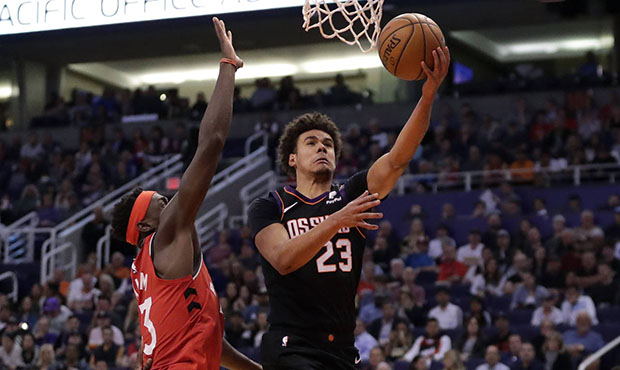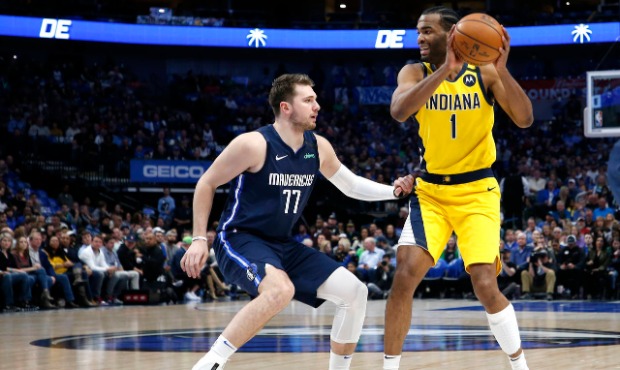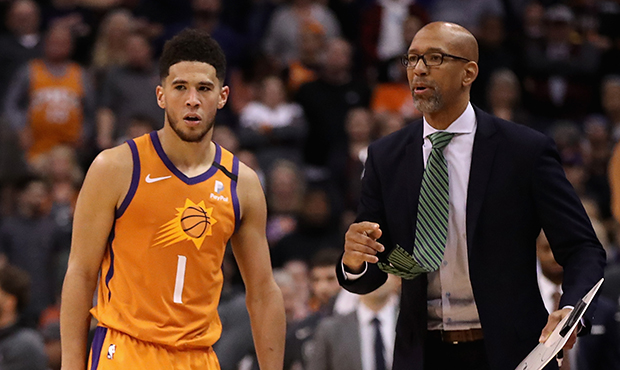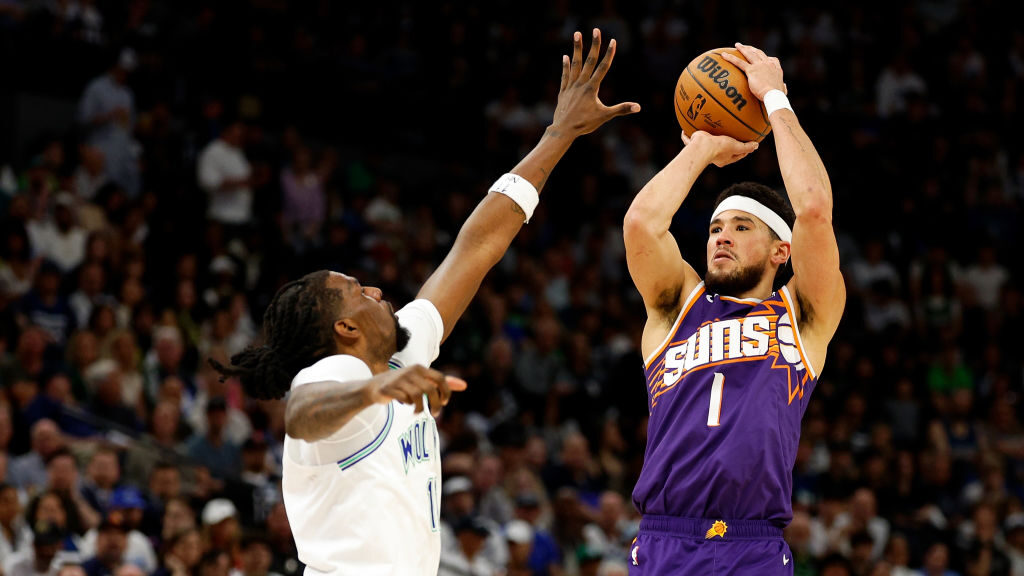Grading the Suns’ last offseason: Aron Baynes-Ty Jerome trade a mixed bag
Jun 1, 2020, 11:09 AM

Sacramento Kings guard Yogi Ferrell, center, fights through the screen set by Phoenix Suns center Aron Baynes, left, as he tries to guard Phoenix Suns guard Ty Jerome, right, during the second half of an NBA preseason basketball game in Sacramento, Calif., Thursday, Oct. 10, 2019. (AP Photo/Rich Pedroncelli)
(AP Photo/Rich Pedroncelli)
With the NBA suspended due to the coronavirus, the future of this season is in doubt for the Phoenix Suns. Even if the season continues with a vote on a return-to-play plan this Thursday, the Suns are 65 games in and certain declarations can be made about the moves they made before the 2019-20 season.
Empire of the Suns is taking a look at the most significant moves from last offseason, the first in which general manager James Jones and senior VP of basketball operations Jeff Bower were in charge on a permanent basis. Both Kevin Zimmerman and Kellan Olson will be giving their own grades, and we’ll also post the results from a Twitter poll.
Next up is the Suns’ acquisition of veteran center Aron Baynes and a first-round pick that became Ty Jerome. Listen to the 25:20 mark in podcast above for our discussion about it.
Suns trade a 2020 top-7 protected first-round pick (via Bucks) to the Celtics for Aron Baynes and the No. 24 pick in the 2019 NBA Draft (Ty Jerome)
Kevin Zimmerman’s grade: C
Kellan Olson’s grade: D+
Twitter grades: B (42.7%), A (33.5%), C (18%), D/F (5.8%)
There are layers of this deal relating to the other moves Phoenix made around the draft and free agency. To start, the financials didn’t look ideal.
Upon the trade being made, it became clear that the Suns would move on from fan-favorite Richaun Holmes — an athletic backup center expected to earn a hefty pay-day in free agency. Instead of investing in Deandre Ayton’s backup from 2018-19, Phoenix favored Baynes, who came in on an expiring $5.3 million contract.
Holmes didn’t earn the big salary he sought and would eventually earn a two-year contract that pays out less than Baynes’ deal each season. That didn’t help people become fans of Phoenix’s decision, and neither did Holmes’ best season yet. He averaged 12.8 points, 8.3 rebounds and 1.4 blocks per game while shooting 65% as one of the Kings’ best players.
Baynes’ play to begin the year for Phoenix certainly softened the blow of losing Holmes.
When Ayton earned a 25-game suspension after the season-opener by testing positive for diuretics, Baynes stepped in.
To put it bluntly, the then-32-year-old played way over his head. He splashed well above 40% of his threes in the first month-plus of the year and was an easy reason why the Suns started 7-4 in 2019-20.
His screens freed Booker as the shooting guard welcomed playing off the ball. It led to efficiency in Booker’s offense as his playmaking remained as productive and his defense improved.
Generalized advanced stats pegged Baynes alongside Giannis Antetokounmpo and LeBron James at early points in the year. He was that ridiculously meaningful.
Even when Ayton came back and even as teams began attacking a heavy-legged Baynes, the backup center’s value remained as the law of averages struck. He was a vocal leader and a pro, and his 37-point outburst on March 6 showed that without carrying the load of regular starting minutes, he could still make a winning impact.
Baynes averaged 11.5 points and 5.6 rebounds while shooting 35% from three for the year, not bad at all for someone who got the ultimate greenlight on his three-point shooting for the first time in his career.
Regardless if Baynes is re-signed for 2020-21 and beyond, his play early on presented a blueprint for coach Monty Williams to get extreme in loading the roster with floor-spacers and ball movers, especially at backup center. There’s a lot of value in that as the Suns try to build on their identity.
Where this trade with the Celtics takes a concerning turn is with what Phoenix did with the No. 24 overall pick.
In training camp, the messages coming from the Suns indicated Jerome was a favorite to become the backup point guard behind Ricky Rubio. He didn’t need the ball in his hands and as a savvy passer and deep-range shooter would fit the offense quite well.
An ankle injury just before the season sucked all that optimism away.
Jerome returned on Dec. 2 and immediately got ushered into the backup point guard role after Jevon Carter and Elie Okobo failed to take advantage of his absence, but he too didn’t seize the role.
Jerome was out of the rotation by Christmas time and bounced in and out of minutes through mid-March, before the coronavirus-caused suspension in play.
At this point, we can call Jerome’s rookie season a redshirt year. Coming out of Virginia, he was already a below-average athlete, but red flags cropped up beyond that.
Jerome lacked a feel for the game, too. In one G League outing to get him some in-game experience, he was blocked four times, often times while stepping out for jumpers.
Over 315 NBA minutes played, Jerome got to the foul stripe 14 total times. While he has great vision in the pick-and-roll, he didn’t have the explosion, body control or ball-handling to handle ball pressure — let alone create off the bounce. Williams recognized that and took pressure off Jerome by moving him to shooting guard at different points.
Can Jerome, who has the mind for it, catch up to the speed of the game and work on his frame? Can he slow the game down?
We know Baynes brought value and positive momentum to a team that could have submarined following Ayton’s suspension that started Williams’ coaching tenure.
It’s Jerome’s ability to simply stick in the NBA as a rotational backup guard that will be the swing factor in this judging this trade moving forward. As of now, that’s in question.












Comments